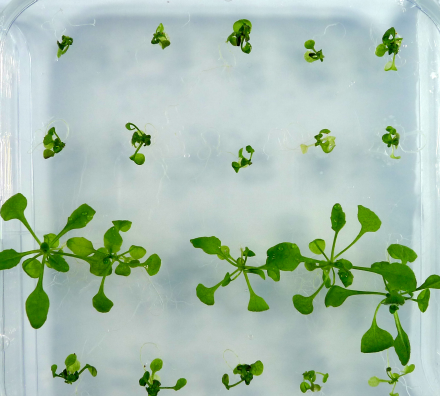Metabolism-dependent herbicide resistance of invasive weeds is currently a major threat for intensive agriculture. Metabolism frequently leads to resistance to multiple herbicides with different modes actions, but the underlying molecular mechanisms and evolution of this type of resistance are still poorly understood.
Boachon et al. recently demonstrated the unusual promiscuity of the CYP706A3 enzyme from A. thaliana that converts mono- and sesquiterpenes from floral scent into terpene oxides for flower defense against florivores. Fatemeh Abdollahi and Nicolas Navrot of the team of Emmanuel Gaquerel, in collaboration with Laurence Miesch (Institute of Chemistry, Strasbourg), now demonstrate that CYP706A3, as well as several other P450 enzymes from the CYP706 family from diverse plant species, can detoxify most the herbicides of the class of dinitroanilines. Shifting CYP706A3 production from the floral tissues to the vegetative parts of the plant is sufficient to confer herbicide resistance.

Arabidopsis expressing CYP706A3 in its vegetative tissue is resistant to pendimethalin which inhibits the growth of wild plants or plants transformed by a other P450 which does not detoxify pendimethalin.
This work reveals how weeds can acquire resistance to dinitroanilines, identifing new actors of herbicide resistance and delineating their catalytic and structural properties. It thereby provides new strategies for rational design of more sustainable active compounds. It also establishes a so far overlooked connection between the metabolism of natural compounds and herbicide detoxification, highlighting the potential impact of herbicide treatments on plant defense.
This work was published in the revue New Phytologist on November 30, 2020















